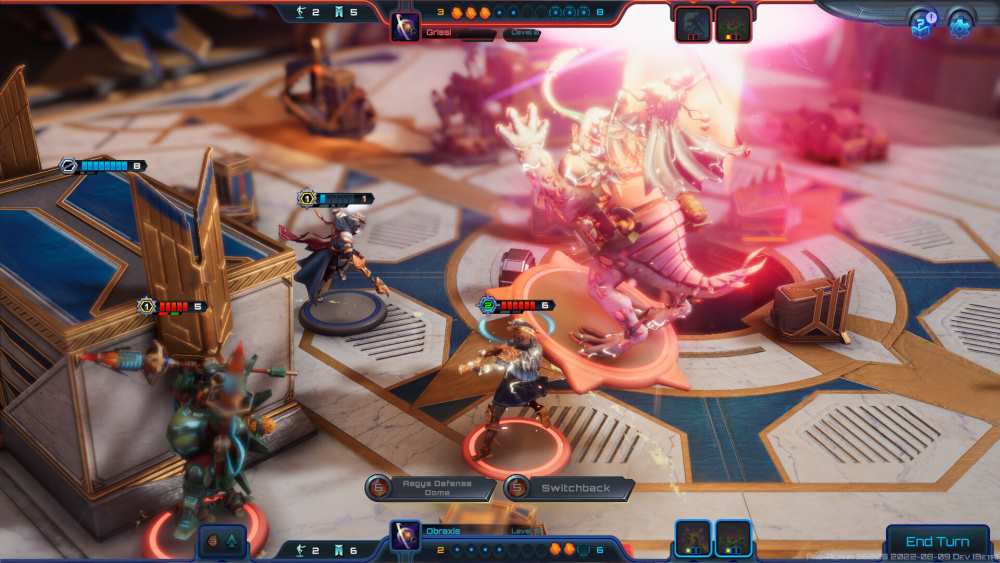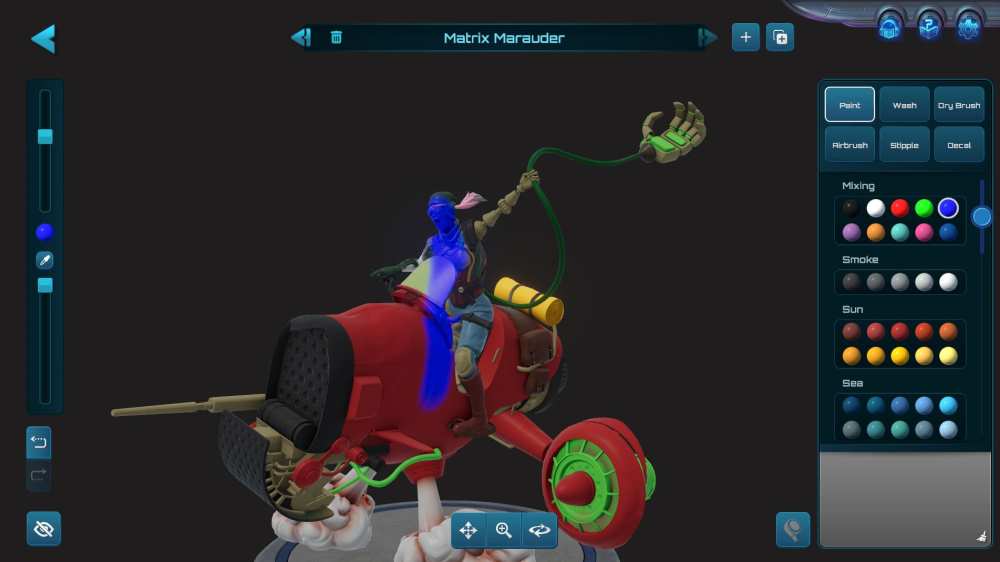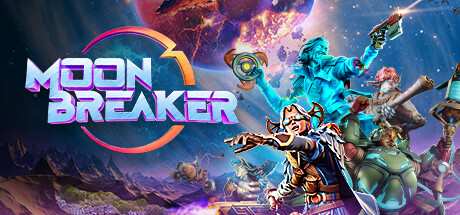Moonbreaker Preview
You’ve never played a game quite like Moonbreaker. I mean you have, but never quite in this combination. Moonbreaker is the pineapple on gaming’s pizza. You may be shocked at first, or skeptical, but once you try this peculiar combination of miniatures wargame/gacha collection/digital creativity/epic fantasy podcast, you’ll find it hard to go back. Already a super fun game, Moonbreaker is most exciting when it creates a world of potential.
The Depths of Space
Moonbreaker first drew my eye when I noticed the dev team. This is the new game from Unknown Worlds, the studio that made the masterful Subnautica. That is one of my favorite crafting games of all time, perfectly capturing the core of what makes so many of those games work. Moonbreaker tries to pull off a similar trick except there’s no first person movement or crafting or exploring to be done. Instead, this is a boardgame.

I mean literally a board game. The characters in this game aren’t represented by digital, animated avatars. The characters in this game are pieces made of simulated plastic. They scooch across the board, they hop around; sometimes they glow. But the game is trying to capture the appeal of something like Warhammer. You make a team of weird guys, built around a captain. Your goal is to take out the enemy captain. They are doing the same for you. Every turn you will accumulate a magical space ore called Cinder, which you can use to land more of your guys on the battlefield, or to pay for a character’s special ability.

Once you unlock characters and assemble them onto a team, you can paint them. Now to me, this is the most appealing part of the game. I’ve played 20 hours of Moonbreaker so far. I’ve won most of my matches against the computer, and all of my matches against other players (humblebrag; from Hearthstone to Counter Strike, I suck at online multiplayer). But of those 20 hours I’d say more than 10 of them, maybe even 15, were spent painting.
Collect Your Army
The painting tools in Moonbreaker are next level. They didn’t just port over some Microsoft Paint options, and call it a day. Moonbreaker is really simulating paint and plastic. You can blend colors with a dry brush, or apply a wash to highlight a figure’s accents. Paint will drip and get into places you didn’t intend. Fortunately, you have a control-z, and a bunch of other fun options.

As a kid, I always wanted to get into Warhammer and the like. I had friends who were excellent at miniature painting. I dabbled with the Lord of the Rings Warhammer in the early 00s, but I immediately could see this hobby was too expensive for me. In Moonbreaker, you unlock figures with in-game currency and booster packs. There is a way to buy booster packs with real money, but I’ve had no problem grabbing a whole bunch through regular gameplay. I like unlocking, and collecting, and customizing. But of course, there has to be a careful balance. And Moonbreaker lands on the right side of that line for me. Maybe it’s because I know how expensive these miniatures are in real life, and the opportunity to earn them through play sounds very appealing.
Are you a fan of Bran San?
The other appealing part of Warhammer is how deeply you can immerse yourself in the lore. For some people that means diving into the wiki. Other people may want to play lots of different games to see how the story comes together. Or maybe you want to read the Warhammer books (there are some awesome ones by Dan Abnett) or the comics? Moonbreaker aspires to build a grand universe. And who better to do it than fantasy author Brandon Sanderson?

Sanderson is extremely prolific (unlike perhaps, other famous contemporary fantasy authors). He’s famous for the Mistborn series, which is part of his expansive Cosmere shared universe. He even wrote the last few books in the Wheel of Times series when author Robert Jordan passed away. Sanderson is such a huge get, because the magic in his books often feels like rules for a video game. In an interview with Polygon, Unknown World’s co-founder Charlie Cleveland had this to say of Sanderson:
“Brandon is extremely prolific, super creative, and he’s basically a game designer. He thinks about his magic systems very mechanically, in a systems-oriented fashion with integrity and rules. He’ll create a magic system like in Mistborn, where characters are basically eating different metals. They ingest the metals and they burn them inside their bodies, and depending on what the metal is, they have a new power. Only certain people can use certain metals, and each metal gives a certain ability. It’s a very systems-level approach, [which is why] it was such a no-brainer for him. We loved his work already, and then talking to him is so natural, because he understands we’re making a game. He built a universe that is systemically perfect for a video game.”
Sanderson himself seems really into it, playfully talking smack about George RR Martin (“Let me be salty,” Sanderson said. “FromSoftware decides to make a fantasy game and partner with a fantasy novelist, and they choose someone who spends his days blogging about the NFL rather than the person who has played their games since King’s Field and has listed their games as among his top 10 consistently over time. What are you thinking people?”). Sanderson claims he has ten years of storylines mapped out.

Where do you get the story in this game? It feels a lot like Overwatch actually. A few sentences in a bio here, an in-game bark there, and you start to put together the story. I like that the game is front and center, but the lore is there enticing you. And if you want to take that step, you can listen to audiodramas, dramatic in-game podcasts that draw you deeper into the game’s universe. The perfect listening when you’re spending hours and hours perfecting the paint on a miniature’s teeth.
So where does that put us? Let’s do the math. A new game from the makers of Subnautica. It’s an original collectible miniatures game, with a much lower cost of entry than its tabletop equivalent. There’s a super involved painting system. There’s a story written by one of the most renowned living fantasy authors. And there’s an in-game audio drama to follow along with.
You see what I mean with the pineapple and the pizza? I’ve definitely enjoyed a lot of those things separately, but having one game go so hard comes as a surprise. For me it’s a pleasant one. I get to play a fun board game while hearing a Sanderson story and customizing my army? That is a wonderful combination of flavors.
***PC code provided by the publisher***

